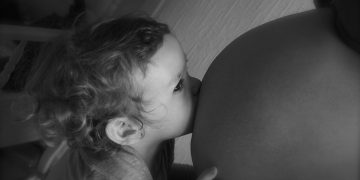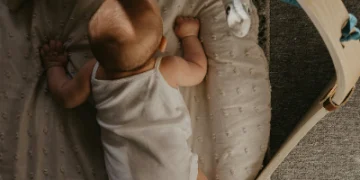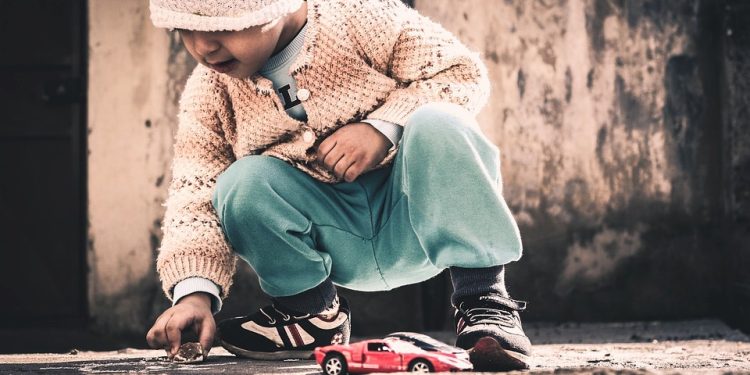Potty training is a crucial stage in early childhood development, marking a significant step from diapers to using the toilet independently. Despite being a natural process, potty training can be daunting for both children and parents. In this comprehensive guide, we delve into the essentials of potty training, ensuring you’re well-equipped to embark on this journey with your toddler efficiently and effectively.
Understanding the Right Time to Start Potty Training
The timing of potty training varies for each child; however, most children show readiness between the ages of 18 and 24 months. Crucial signs of readiness include showing interest in bathroom habits, staying dry for longer periods, and the ability to follow simple instructions. Initiating training too early can lead to unnecessary frustration, while delaying it can make the process harder.
Why is Potty Training Important?
Potty training is an essential milestone in your child’s development. Not only does it mark the transition from diapers to underwear, but it also teaches your child independence, responsibility, and self-control. By mastering the art of using the toilet, your child will gain confidence and a sense of accomplishment that will carry over into other areas of their life.
Preparing for Potty Training
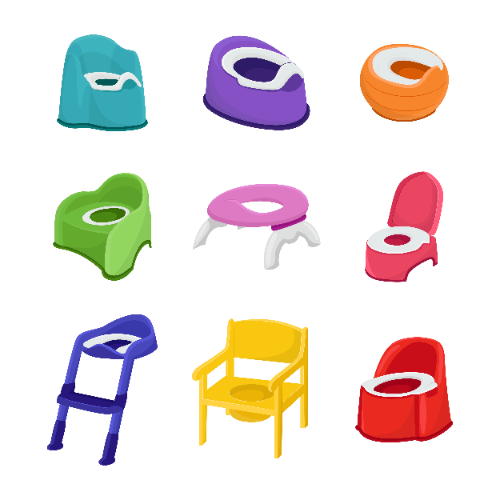
Choosing the Right Equipment
Invest in a child-friendly potty chair or a seat reducer that fits over a regular toilet seat. This equipment should be stable, comfortable, and the right size to prevent any fear or discomfort that can discourage the child from using it.
Establishing a Routine
Consistency is key in potty training. Establish a simple routine that fits into the daily activities of your child. Encourage visits to the potty after meals or during other predictable times. Consistent routine not only builds habit but also enhances the child’s confidence in using the toilet.
Dressing for Success
Dress your child in clothes that are easy to take off, such as pants with elastic waists or dresses. Avoid outfits with complicated buttons or zippers which can cause delay and frustration during urgent moments.
The Potty Training Process
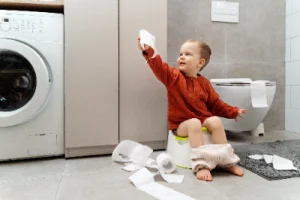
Gradual Introduction
Start by letting your child explore the potty — sitting on it clothed, then with a diaper, and gradually transitioning to using it without a diaper. Normalize the use of the potty by incorporating it into daily conversation and routine.
Positive Reinforcement
Use praises, stickers, or a chart to reward successful attempts, whether small or significant. Positive reinforcement encourages the child and makes them feel proud of their progress.
Handling Accidents with Compassion
Accidents are an inevitable part of the potty training process. Handle them with patience and understanding. Reassure your child that accidents are a normal part of learning, and it’s okay. Avoid showing disappointment; instead, encourage them to try again next time.
Common Potty Training Challenges and Solutions
Resistance
Some children might resist potty training due to fear, lack of interest, or simply because they are not yet ready. If resistance occurs, take a break and try again after a few weeks. Always ensure the process is stress-free and positive.
Nighttime Training
Nighttime control often comes months after daytime potty training. Use protective sheets and absorbent night-time underpants to manage accidents. Limit fluid intake before bedtime and ensure the child uses the toilet right before sleeping.
Regression
Regretion in potty training can happen due to stress, changes in routine, or developmental stages. Remain patient and supportive, reinforcing training without pressure.
Tips for Success in Potty Training
- Stay Positive: Children respond well to a cheerful, encouraging environment. Keep the mood positive and upbeat.
- Be Patient: Every child is different. Some may learn quickly, while others take more time. Be patient and let your child progress at their own pace.
- Keep it Fun: Use books, games, and songs about potty training to make the experience fun and engaging for your child.
- Communicate: Talk to your child about what to expect and why it’s important to use the toilet. Clear communication can help demystify the process.
Potty Training and Childcare
If your child attends daycare or spends time with a caregiver, communicate your potty training methods and progress to ensure consistency. Alignment between home and childcare providers can provide a smoother, more effective training experience.
When to Seek Help
While most children successfully master potty training with time and patience, some might need additional help. Consult your pediatrician if:
- Your child shows no interest in training by the age of three.
- There is a persistent difficulty or inability after several attempts.
- There are physical symptoms like pain or any unusual occurrences during potty training.
Common Questions and Concerns
As a parent, you may have many questions and concerns about toilet training. Here are some common questions and answers to help guide you through the process:
Q: How do I know if my child is ready for potty training?
A: Look for signs of readiness, such as showing interest in the toilet, staying dry for longer periods, and being able to communicate their needs. Every child is different, so it’s important to be patient and observant.
Q: How long does it take to potty train a child?
A: The toilet training process can vary from child to child. Some children may learn quickly, while others may take longer to master the potty. It’s important to be patient and consistent throughout the process.
Q: What should I do if my child refuses to use the potty?
A: It’s common for children to resist toilet training at first. Try to make the experience fun and positive by using rewards and praise. Encourage your child to practice sitting on the potty chair fully clothed until they feel comfortable using it.
Q: How can I help my child stay motivated during toilet training?
A: Positive reinforcement is key to keeping your child motivated during toilet training. Offer praise, hugs, and small rewards for successful potty trips. Create a reward chart and let your child add stickers for each successful potty break.
Conclusion
Toilet training is a significant milestone in a child’s development, and it can be a challenging process for both parents and children. However, with patience, consistency, and positive reinforcement, you can help your child successfully master the potty. Remember to create a positive environment, establish a routine, and use positive reinforcement to motivate your child. Address setbacks with understanding and support, and celebrate your child’s progress along the way. By following these tips and techniques, you can guide your child through the toilet training process with confidence and success.
Remember, every child is different, so it’s important to be patient and flexible throughout the toilet training journey. With the right guidance and support, your child will soon be using the potty independently and confidently. Good luck!



